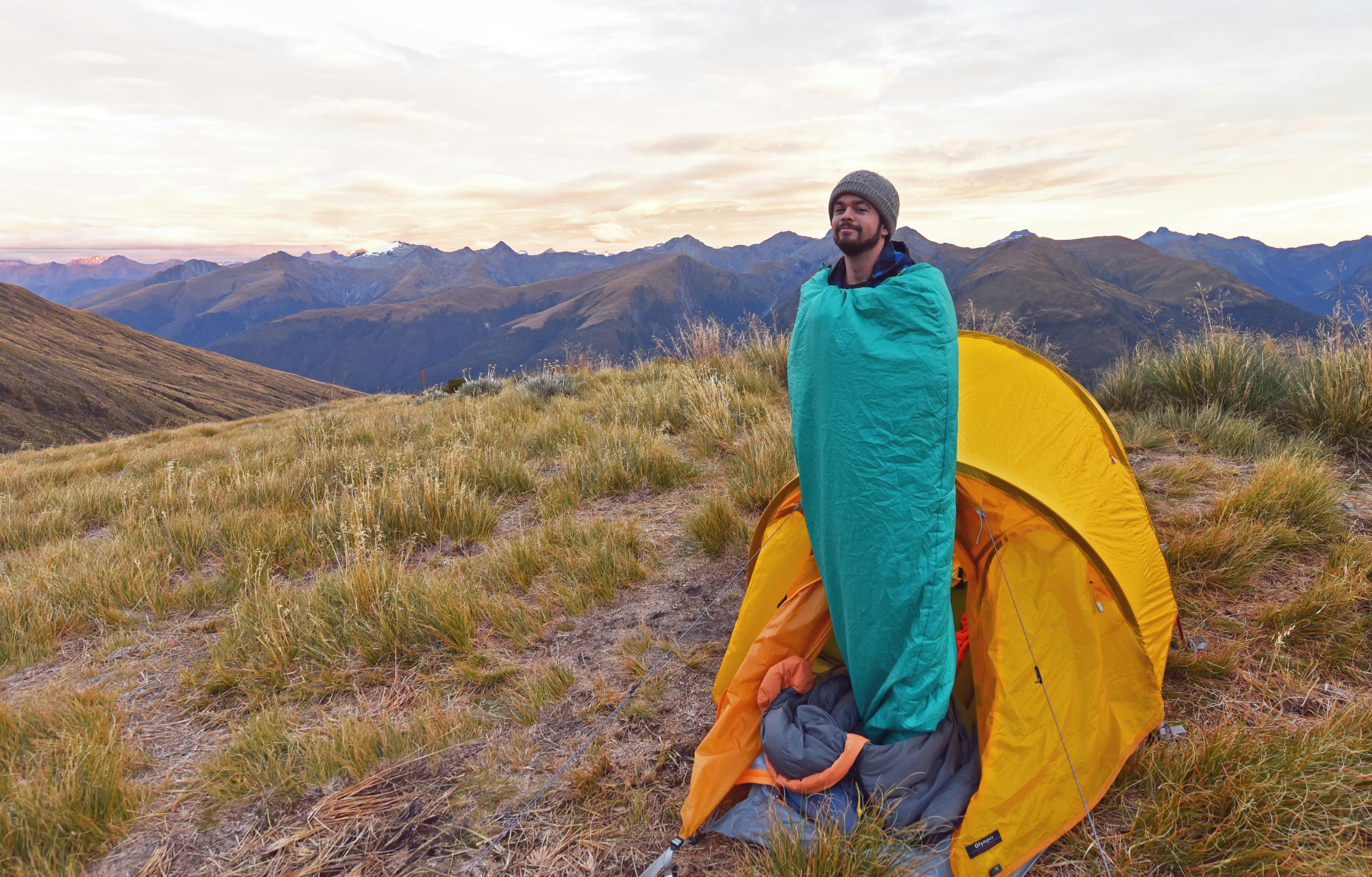If you want your expensive down sleeping bag to perform for years to come, you need to get a sleeping bag liner.
I wasn’t sold on sleeping bag liners until I slipped into a silken dream of my own for the first time.
Since then, my no-frills liner has become an indispensable part of my sleeping kit, and I’ve come to use it more than my down sleeping bag due to its versatility across four seasons.
In summer, I use it camping in the humid far north with my unzipped sleeping bag thrown over like a blanket, and in winter it adds a valuable layer when the mercury takes a dive.
In tropical Tonga, it kept nocturnal nasties from biting, while adding the perfect amount of insulation.
To naysayers, a liner is a luxury item that adds unnecessary weight to your pack.
To converts, liners are a versatile piece of kit, adding comfort and extending the life of a sleeping bag.
From sleeping bag to sweating bag
A sleeping bag liner is a line of defence between your body and your sleeping bag’s loft, which can be prone to clumping and degradation over time.
“If oils from your skin and sweat get into the down, unless you’re prepared to wash your sleeping bag regularly, you end up losing loft power,” says Amy Cullen from Hamilton retailer Trek ‘n’ Travel.
And if you’re anything like Wilderness readers, your sleeping bag probably hasn’t ever seen the inside of a washing machine. Our Facebook poll suggests just 34 per cent of readers have ever washed their sleeping bag, and although it’s not advised to wash your bag after every use, Cullen says regular washes are essential for longevity and performance.
“People with older down bags will often comment that they’re just not working anymore, and they’re not keeping them warm.
“We suggest taking it to a dry cleaner and getting it laundered (as opposed to dry cleaned). It makes a huge difference.”
A liner, on the other hand, is easy to clean at home and is quick-drying.
In addition to the potential for down degradation, Cullen says using a liner is a matter of hygiene, as trampers often go to sleep muddy, bloody and grimey.
“You wouldn’t leave your sheets on your bed for 10 years, and while you don’t use your sleeping bag as often, you get the idea,” she says.
Lining up your layers
Like sleeping bags, liners come in a range of materials and weights – some suitable for winter, and some for summer.
A silk liner is lightweight, compact and breathable, and can be used year-round if paired with the right sleeping bag.
While they don’t add a great deal of warmth, they’re perfect for sticky warm nights when even a summer-weight bag might be overkill, but you still need a layer.
Cotton liners are generally cheaper options, and while they are less breathable, they offer durability and will absorb sweat and body oils.
Fleece, synthetic and thermal liners are designed for warmth, and some claim to boost a sleeping bag’s rating by up to 14 degrees.
But Cullen says liner temperature ratings should be taken as a guide only.
“[The effectiveness of the liner] depends on the sleeping bag itself and on the person – no two people run at the same temperature, so it does vary,” she says.
Cullen owns both a silk and a thermal liner, and says the latter makes a huge difference on winter trips.
“It’s amazing – like jumping into a giant wheat bag,” she says.








